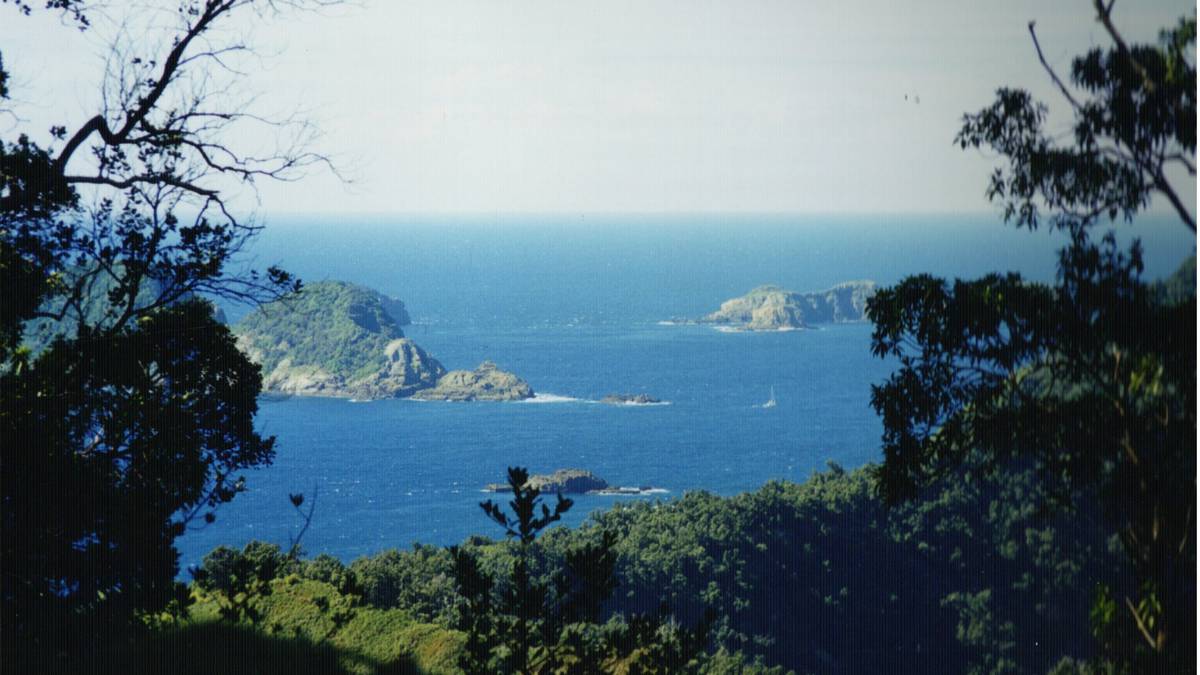View from Raoul Island of the Meyer, Dayrell, Chanter and Nugent islands in the Kermadec Group, northeast of Aotearoa New Zealand. Photo / Laurie Mead, File
OPINION
In 2015, then National Party leader John Key spoke at the United Nations, where he announced the Kermadecs Reserve, an enormous ocean sanctuary.
It was meant to be his sustainability trumpet blast to
a global audience.
Unfortunately, this diplomatic maneuver was conceived in murk and poorly designed. Consequently, it has never been implemented. Nick Smith, the former Conservation Minister, developed the proposal without consulting either the fishing industry or Māoridom at large.
During this time, the Obama-led US government was putting a lot of effort into worldwide marine protection. Senator John Kerry, the present US envoy for climate change, was leading the charge. Once Donald Trump arrived in the White House, however, such airiness died.
Meanwhile, back home, the genie was out of the bottle. The Green Party was elated that a sanctuary, twice the size of the Aotearoa landmass, was coming into being. The party had its own Kermadecs parliamentary bill. Not unlike a conger eel, it still lurks under bureaucratic kelp.
/cloudfront-ap-southeast-2.images.arcpublishing.com/nzme/ZSFYP2G7NJM2SBVCIJ767HAMT4.jpg)
The Government also has its own Kermadecs Ocean Sanctuary bill. Actually, it is the Nick Smith 2016 bill. It creates an absolute prohibition on fishing, mining and related economic activities.
As it is, it will negate all Māori fisheries and related rights.
Advertisement
It would appear that the current Government is anxious to push on and create this jumbo marine reserve prior to the October election. To this end, it has been collaborating with Te Ohu Kaimoana (TOK), otherwise known as the Treaty Fisheries Commission.
This body was created after the historic settlement of Maori fisheries claims in 1992. It has a statutory duty to support and facilitate Maori into the business and activity of fishing. An industrial writ based on growing, harvesting, processing and selling the bounty of Tangaroa.
This advocacy body now appears more interested in extinguishing Māori rights within the Kermadecs area. A national meeting of all the tribes is being hosted on June 13 by TOK. The venue is the Wellington, James Cook Hotel – a risky endeavour indeed.
Labour ministers hope iwi will turn their rights into political berley but Te Aupouri will not agree. As one of the original 1986 fisheries claimant tribes, we are opposed to such alienation. Our tribe was an original litigant in the failed 1963 ownership case of the 90 Mile Beach. Not surprisingly, Te Aupouri has no interest in supporting this dubious UN initiative.
It is possible that TOK, the entity statutorily mandated to safeguard Māori fisheries rights is violating its own law by facilitating alienation. No amount of ecological speak will erase the words of the 1992 full and final fisheries settlement.
In the 1980s, local fishing fleets from Mangōnui, Tauranga, and Whangaroa went and harvested hāpuka and bluenose in the Kermadecs. This raised the ire of the fisheries officials but when the quota management system was established in 1986, fisheries rights were recognised in the Kermadecs zone.
Stories abound as to whether the catch data from those hearty fisheries of 40-50 years ago were accurately recorded. There is an absence of reliable research into the state of the Kermadecs fishery resource. This has allowed prohibitionists to falsely assert that Māori fisheries rights are hollow.
The fact remains, however, that within the proposed 620,000 square kilometre sanctuary Māori property rights have been affirmed in law. It is obvious that within such an expanse there are rich fisheries and other resources.
Advertisement
/cloudfront-ap-southeast-2.images.arcpublishing.com/nzme/YDULJIL5WLQKR5MLK7TAGGVC2A.jpg)
If the Kermadec zone was given its own exclusive economic zone (EEZ) status, it would rank as the 41st largest in the world. Why should Te Aupouri interests be turned into an unseen oceanic anemone with no economic upside? No right-thinking nation would be so reckless.
The apparent benefits of this sanctuary are not quantified. The analysis backing this legislative confiscation makes a great deal about international agreements. Such mouthfuls need to be tempered with a sound analysis of our domestic obligations to each other.
A robust level of protection already exists for the pelagic and subterrestrial inhabitants of the Kermadecs. A 12-mile no take limit has been imposed and a series of benthic protection areas were introduced in 2007.
Many iwi have a view about decarbonisation that is informed by the least-cost option. This is in contrast to our own Climate Commission narrative. Scientists working on carbon storage and sequestration have just released a discussion document including the potential of oceanic decarbonisation.
Science and innovation are moving quickly. Our whole EEZ has a role in how we manage the costs of net zero. The dynamic of 2015 has changed. The alleged paramount benefits of oceanic lock-up reserves need to be looked at anew.
It is ironic that as politicians attempt to surf poll waves by promising to re-interpret the Treaty of Waitangi, our own iwi Fisheries commission runs the risk of selling out our own Treaty rights.
– Penetaui Kleskovic is operations manager at Te Aupouri Commercial Development.




